The British Shorthair and Russian Blue are two breeds I find especially enthralling, both boasting beautiful appearances and endearing personalities. Though I love both breeds equally, my heart truly belongs to the British Shorthair for his incredible tolerance and affectionate disposition.
My heart goes out to the sweet Russian Blue. These two breeds share an interesting history; for instance, British Shorthairs with their distinctive blue-grey coat can trace it all back to crossings between Russian Blues and Shorthairs.
The British Shorthair Cat: What You Must Understand About The “Teddy-Bear Cat”
British Shorthairs have earned themselves the name “Teddy Bear Cat Breeds” due to their endearing physique, large expressive eyes, and thick fur. While not everyone welcomes cuddling and kissing sessions with these felines, their affectionate personalities remain undiminished, showing deep love and unfaltering loyalty from these charming felines.
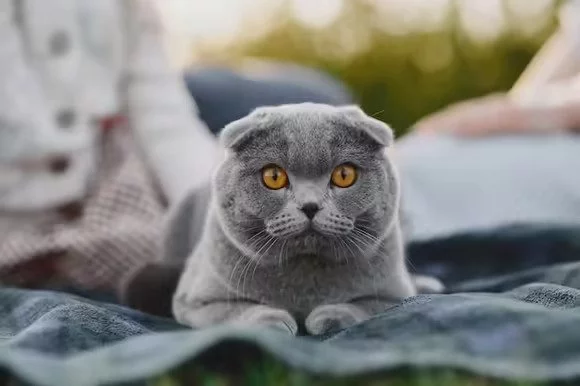
British Shorthairs may initially seem reserved at first, but tend to warm up over time – once familiarized with your personality they quickly become part of your life and yearning to be close by in your home during relaxing moments or while working from home. You might find them irresistibly drawn towards your bedroom for warmth and companionship as they cuddle close alongside you while sleeping!
British Shorthairs’ history can be found dating all the way back to Roman Britain. When Egyptian cats were brought over during Roman sea voyages to help manage vermin populations, these Egyptian cats interbred with European wildcats, eventually giving rise to Britain’s first domestic breeds of cat.
At the dawn of Victorian England, one enthusiastic cat enthusiast set out on an ambitious quest to create pedigreed variants of domestic cats through meticulous breeding efforts that focused on improving both temperament and physical features – eventually producing what would become known as the British Shorthair as its masterpiece result.
What You Need To Know About The Archangel Cat: The Russian Blue.
The Russian Blue is named after its gorgeous gray-blue fur, which boasts a velvety sheen. A typical Russian Blue features stunning emerald-green eyes with pinkish-lavender or mauve-hued paws; unlike their counterparts, however, Russian Blues tend to have active and less stocky builds.
Russian Blue cats have long been associated with grace, elegance and graceful movement – creating many tales about their origins. A popular theory suggests they came into being through crossbreeding between cats owned by members of Russia’s royal family during Tsarist times and naturally occurring cats from the Archangel Islands in Russia.
Also Read:- Female Vs Male British Shorthair CatsSeafarers in the 1800s encountered alluring felines known as Russian Blues and attributing to them an aura of healing powers and luckiness, earning them their beloved moniker as “Archangel cats”. Although initially shy and reserved, Russian Blues quickly form strong relationships with loved ones by actively seeking attention and companionship; becoming very attached in some instances!
PRICE
Price can differ widely depending on various factors, and should always take place of purchase location into consideration as different countries and regions within countries may impose drastically differing costs on breeders of British Shorthair.
In the UK, buyers can typically expect to pay around PS1200 for a high-end show kitten from purebred breeds. US prices tend to range between $1000 and $2000 with higher-end specimens sometimes costing more. Buyers in Australia may find more economical kitten options; many cost under this threshold.
Saving money could be accomplished by selecting an excellent pet British Shorthair kitten instead of a show-quality kitten. Adult cats usually cost less, with retired breeders and ex-show animals available at reduced costs compared to kittens.
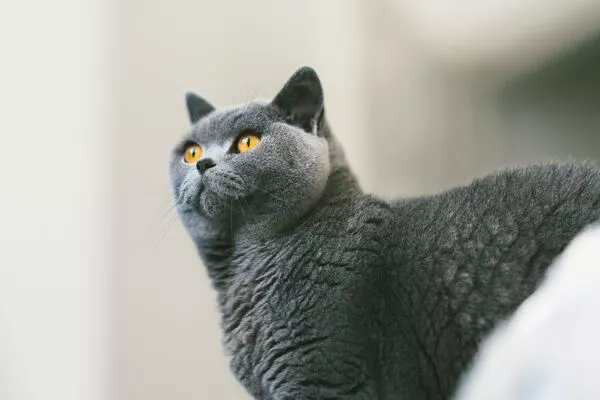
Due to their widespread popularity, rescue British Shorthairs can sometimes be hard to come by; when available though, costs tend to be relatively reasonable.
Contrastingly, Russian Blue cats tend to be much less expensive; you can find a well-bred kitten for less than PS1000; in the US and Australia pedigree Russian Blue kittens can cost anywhere between $850 and $1200.
Pedigree cats can be expensive investments; one way to lower expenses and save money by opting for non-show cats may be selecting non-conforming Russian Blues with slight imperfections such as knotted tails or off-color markings that don’t conform with show standards. These cats tend to cost significantly less.
Also Read:- Can British Shorthairs be Aggressive?CHARACTER
The British Shorthair cat breed is well known for their remarkable kindness, patience, and unfaltering steadiness. While not typically lap cats (I have met several older females that adore cuddling on my lap – though these instances were more exceptions than rule), this species does possess exceptional character qualities such as kindness.
This breed exudes a calm and composed demeanor rather than exuberance, yet don’t mistake their seemingly distant appearance for an absence of affection – the British Shorthair is an affectionate companion who will cherish you in their own special way – always looking to stay by your side, sleeping by your feet as you move about your home or cuddling against you while watching television shows together.
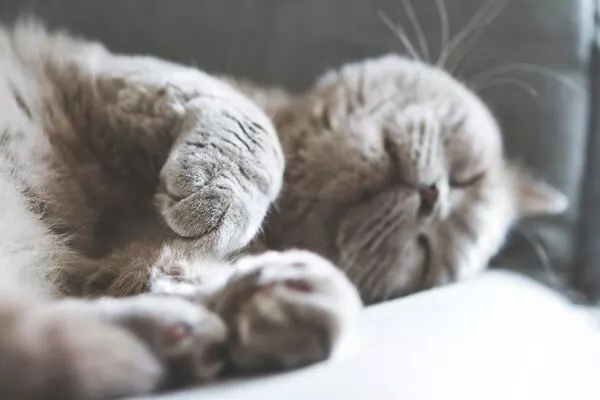
British Shorthairs may not be known for being overly playful, but they do enjoy toys and games that stimulate their hunting instincts or require them to think for themselves. Give them something to chase or teach them fetch, and they’ll happily engage with you for as long as it takes! Additionally, this breed is low-maintenance so can lounge happily while you work.
Also Read:- Do British Shorthair Cats Shed A Lot? A Comprehensive GuideRussian Blues tend to be equally placid but display more playfulness without resorting to destructiveness or drama. They have a calm yet affectionate disposition, often preferring lap cuddles over physical affection from their British Shorthair counterparts. Once they know they like you they become quite fond of cuddling with you.
To gain their affection, show them love and affection in abundance and they’ll respond in kind. While known for being active, these cats typically don’t display as many destructive tendencies compared to some other breeds; rather they prefer climbing shelves than other breeds do.
Russian Blues may not be as independent as British Shorthairs, but they’re well-mannered enough to adapt well in urban settings without their owner present during the day. They tend to remain quiet throughout their lives – their voices tend to be soft rather than boisterous!
Once Russian Blues feel secure on your lap, they may purr and make soft noises. Due to their meticulous nature, it’s crucial that their litter box be kept tidy and in great condition.
Elderly cats tend to be more costly than kittens, with Russian Blue rescue cats usually cost-effective and reasonable when available. When considering this choice, always ensure it comes from a reputable source: avoid buying from backyard breeders with questionable backgrounds regardless of how appealing their prices may appear; adopt an older cat instead or consider getting a Russian Blue mix from someone reliable instead.
HEALTH
British Shorthairs are known for their robust build, and typically enjoy long and healthy lives. Like all cats, British Shorthairs may experience common health issues; however, this breed’s genetics tend to prioritize resilience over serious medical concerns.
British Shorthairs do tend to have an increased susceptibility for two hereditary diseases: hemophilia B and feline hypertrophic cardiomyopathy – conditions which interfere with proper blood clotting in cats that can be easily identified through DNA testing.
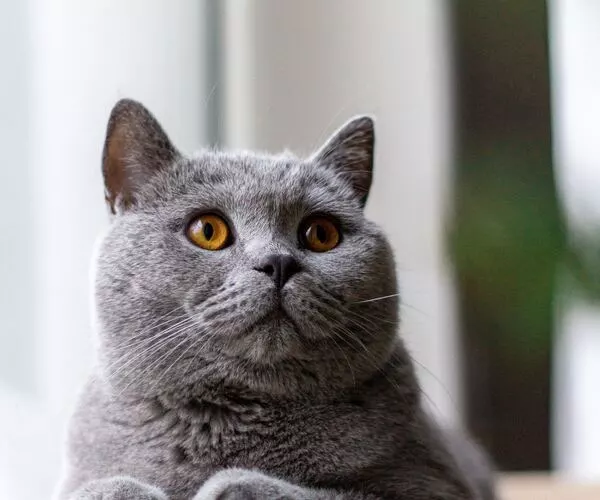
Hemophilia B is a heart condition affecting all cats but more prevalent among British Shorthairs. While not curable, Hemophilia B can still be managed and will typically not immediately impact your cat’s overall health.
Russian Blues tend to be healthy breeds, free of many of the problems afflicting other breeds. They are well known for adapting well in pedigree cat environments. Although Russian Blues do not suffer any specific ailments unique to themselves, they may encounter common health issues that affect cats of all breeds. Russian Blues tend to live between 10-20 years before reaching 25 years, without showing any predisposition towards hereditary conditions and typically require similar care as any other feline species.
One key consideration for both British Shorthairs and Russian Blues alike is the risk of obesity. Russian Blues tend to have hearty appetites that can easily lead to weight gain if their diets are not carefully managed over time.
SIZE/WEIGHT
The British Shorthair belongs to the large breeds. Boasting sturdy and robust body structures, they display significant size in all aspects. As your British Shorthair continues to mature and gain weight, their equipment should be upgraded accordingly to accommodate for their larger frame.
British Shorthair cats tend to experience a gradual process of maturation, typically taking around three years before reaching full maturity; some still continue their growth until around five years of age. It’s estimated that most adult weight is reached within their first year; with occasional spurts. Growth tends to be gradual with occasional “awkward teenager” stages until fully developing into their distinctive BSH appearance.
British Shorthair male adult cats in good health typically weigh 6-9 kilograms at adulthood and may require a diet plan in order to remain at this weight range. Female cats usually start off lighter and could eventually reach 6 kilograms or higher in weight.
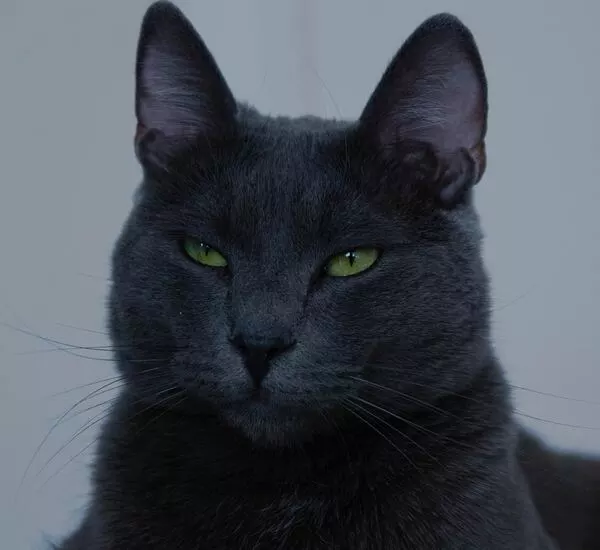
Russian Blue cats are medium-sized cat breeds, typically weighing 3 to 6 kilograms. While there is less sexual dimorphism compared to breeds like the British Shorthair, females tend to be slightly larger once they reach maturity than their male counterparts. When fully grown, Russian Blues boast strong and muscular physiques similar to British Shorthairs but with an average length of 70 centimeters similar to what may be called a Doberman pinscher from their appearance.
Russian Blue cats have long been prized for their sleek physiques and delicate, well-sculpted limbs that give the impression that they walk on their toes. Over time, it’s important to monitor your Russian Blue’s weight to maintain an ideal physique and ensure they maintain it as time progresses.
DOGS AND CHILDREN
British Shorthairs are well-known for their laidback demeanor; when confronted with unpleasant situations, they usually opt for graceful removal rather than aggressive aggression or anger. This characteristic can be particularly helpful when living with inquisitive dogs or children. British Shorthairs generally get along well with other animals unless those creatures trigger their prey response, like small mammals triggering prey response; dogs should usually behave themselves; however, an overly aggressive or disobedient one could leave both you and your British Shorthair feeling stressed out!
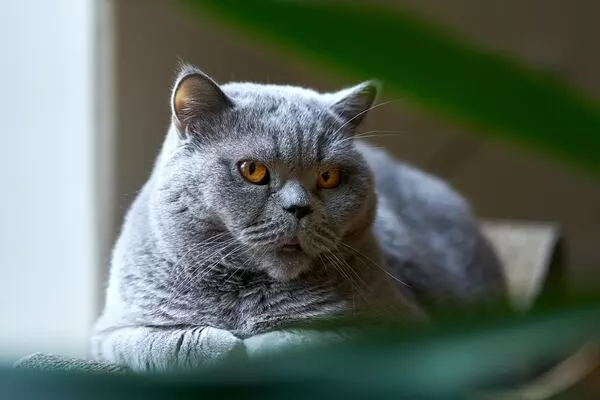
British Shorthairs’ gentle and understanding nature makes them excellent companions for children, and they often form strong bonds with young members of the family. Though watchful of children’s activities, it’s essential that young ones interact with cats under supervision so they do not harm or scare the pet unwittingly; small hands grabbing ears or tails may result in painful experiences for these animals; it is crucial that children learn how to treat pets kindly.
Also Read:- Are British Shorthair Cats Good With Dogs?Russian Blues make excellent companions for households with both dogs and children, as they’re friendly, affectionate pets who exhibit playful tendencies that align well with children. Dogs with loving dispositions also tend to make good partners for Russian Blues; although British Shorthairs might prefer taking more drastic measures against minor irritations or injuries than Russian Blues tend to prefer escape or hiding as a means to seek retribution.
As it’s essential that trusting and friendly cats remain unthreatened by aggressive or affectionate canines, dogs should also be trained to respect the personal space of Russian Blue cats. Too much attention from children, dogs, or household members may make the Russian Blue anxious and skittish; when something upsets or disturbs a Russian Blue they will quickly seek refuge somewhere out of sight or perch on top of cabinets until their composure returns.
MAINTENANCE AND CARE
As with all breeds of cats, British Shorthairs require additional considerations in addition to standard care. Their teeth may cause problems for some breeds; idealistically you should brush theirs once every week but even once every two weeks is acceptable. Furthermore, regular brushing of their fur helps prevent matting while staying active throughout life is key if your British Shorthair is to remain happy and active as they age.
As they age, British Shorthairs may become lethargical and require assistance to prevent physical issues from emerging. It’s wise to invest in a large cat tree for your cat and provide plenty of toys and games; fishing pole toys in particular make great additions as they can be left out for your cat to play with when you are not home.
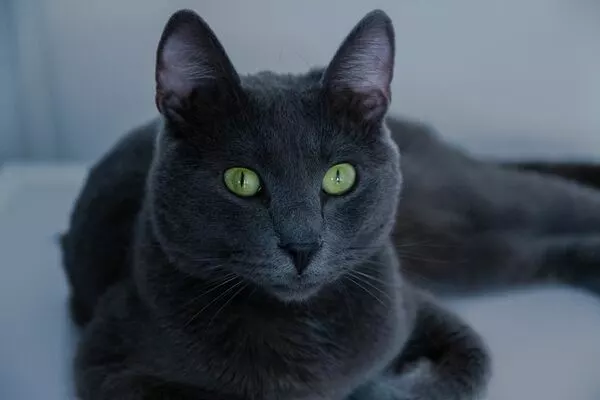
Russian Blues can benefit from regular combing sessions at least twice every week to reduce hairball formation and ensure they get plenty of love and attention when you return from work. Brushing can also help. They tend to be relatively independent when left on their own during the daytime hours; however it’s essential that they receive plenty of love and affection when you return from work in the form of loving attention when you arrive home in the evenings; overfeeding should be avoided, while access to clean drinking fountain water should always be ensured (see more info below).
Russian Blue cats may become susceptible to obesity as they age, making it essential to monitor their diet and prevent them from becoming sedentary. Russian Blues tend to enjoy exercise more than British Shorthairs do so encouraging physical activity is an excellent way of keeping them at a healthy weight. Selecting appropriate cat food and limiting sugary treats are other effective measures for keeping your cat at an ideal weight.
CONCLUSION
Both breeds of domestic cats make great domestic companions and are perfectly suitable for various households, whether a single person lives there frequently or there are multiple pets living under one roof. Their adaptable personalities ensure they can thrive even in busy households with multiple animals.
However, neither breed is recommended as the perfect companion in households with roaming birds and small mammals, as both breeds possess strong prey instincts – with the former especially known for this trait. If this will be your first cat ownership experience, however, the British Shorthair may be preferable due to its good health and nondestructive behavior; both options make great options for novice owners.
If you already own other cats, both breeds should fit right in with them. Both varieties are friendly and have the ability to win over even fearful or hostile cats quickly and form bonds quickly with them – ultimately making your choice between these breeds the result of personal preference and household dynamics.

Hi, this Sienna Metts, the purr-fect authority in the captivating world of feline wisdom. I live in White Plains, NY. With years of experience in studying and understanding the behavior, health, and unique traits of different cat breeds, I have earned a well-deserved reputation as a feline connoisseur. Through my articles, I’ll be sharing captivating stories, practical advice, and expert tips on topics ranging from breed characteristics, care and eating guidelines to training techniques and holistic health solutions.













